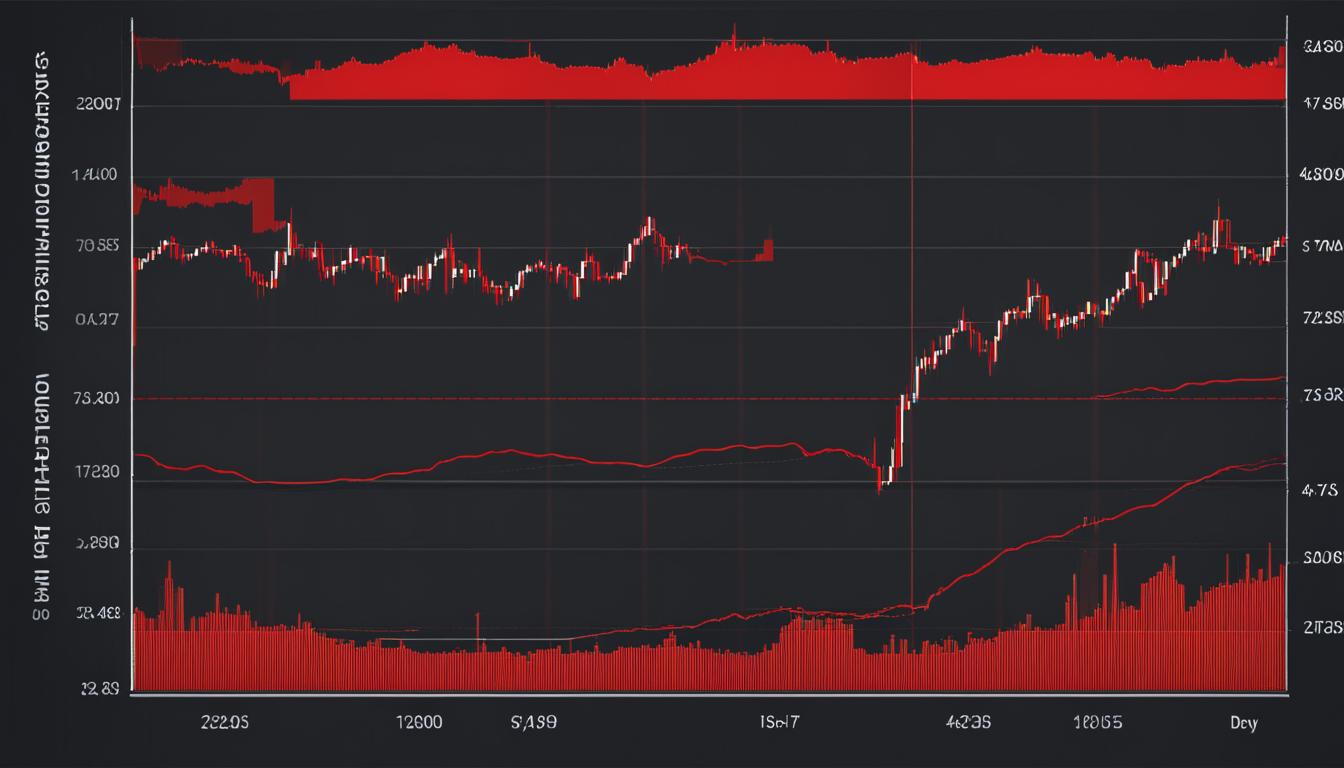Interview with Options Trader: Secrets to Consistent Profits Revealed

Introduction
Learning from successful traders is crucial for anyone looking to excel in the financial markets. Their strategies, experiences, and insights can provide invaluable lessons that theory alone cannot offer.
In this exclusive interview, we have the opportunity to learn from Jean, a highly successful options trader who has made millions from his trades. Jean’s journey in the options market is nothing short of inspiring. He started with limited resources and through sheer determination and strategic acumen, he has become a leading figure in the industry.
Key Achievements:
- Millions in Profits: Jean has consistently generated substantial profits through his trading strategies.
- Decades of Experience: With over 20 years in the market, he has weathered various market conditions.
- Educational Contributions: Jean regularly shares his knowledge through seminars and online courses.
Understanding how experts like Jean navigate the complexities of options trading can significantly enhance your own trading strategies. If you’re new to options trading, familiarizing yourself with basic concepts such as leverage and flexibility will prepare you for the advanced strategies discussed in this interview.
To truly master options trading, it’s essential to explore advanced techniques. For instance, rolling options can unlock immense potential by allowing you to maximize your profits. This comprehensive guide will walk you through the art of rolling options, elevating your trading strategies to new heights.
Additionally, one of the fundamental decisions in options trading is choosing between a call or put. This ultimate showdown between these two strategies can significantly impact your investment goals. Our comprehensive guide will help you understand the dynamics of Call vs Put and empower you to make informed decisions that align with your investment goals.
Now let’s dive into Jean’s world and uncover the secrets to achieving consistent profits in options trading.
Understanding the Options Market and Its Potential for Profits
The options market offers a unique opportunity for traders to generate consistent profits. Unlike traditional stock trading, options provide leverage, enabling you to control a larger position with a smaller amount of capital. This leverage can amplify returns, making options an attractive instrument for traders looking to maximize their gains.
Options also offer flexibility. You can use them for various strategies, including hedging, speculating, or generating income through selling options. The ability to tailor your approach based on market conditions and personal risk tolerance is a significant advantage.
For those new to the field, understanding the basics is crucial. Concepts like calls and puts, strike prices, expiration dates, and premium are foundational elements you need to grasp. If you’re unfamiliar with these terms, consider checking out resources such as this insightful article on how options trading changed over the last decades, which provides historical context and key trends that have shaped the market.
In this interview, we delve into advanced strategies employed by Jean. His experience highlights how mastering these basics can pave the way for more sophisticated trading approaches. For a deeper understanding of specific terms and their implications, you might want to explore what it means to exercise an option as it uncovers the intricacies of this phrase in financial parlance.
Learning from successful traders like Jean provides invaluable insights into achieving long-term profitability in the options market.
Interview with Jean: Mastering Long-Term Profitability through Strategic Trading Approaches
Embracing Mean Reversion as a Core Strategy
Question: Jean, could you share your views on mean reversion and how you incorporate this strategy into your trading approach?
Jean: Mean reversion is a key component of my trading strategy. The basic idea behind mean reversion is that asset prices will tend to revert to their historical average over time. This concept applies well to options trading, where price fluctuations can be significant due to market volatility.
I use various technical indicators to identify when an asset is deviating significantly from its average price. For instance, the RSI (Relative Strength Index) is a valuable tool that helps me gauge whether an asset is overbought or oversold. You can master the market with the RSI indicator using this comprehensive guide. When I spot an overbought condition, I anticipate a price decline and position myself accordingly.
Here’s how I integrate mean reversion into my trades:
- Data Analysis: I examine historical price data to determine the asset’s average price and standard deviation.
- Technical Indicators: Tools like the RSI and Bollinger Bands help in identifying extreme price levels.
- Entry Points: I enter trades when prices deviate significantly from the mean, expecting a reversion.
This strategy not only allows me to capitalize on short-term price movements but also helps in managing risk. By anticipating a return to the mean, I can set realistic profit targets and stop-loss orders.
The Power of Options Selling and Its Role in Jean’s Strategy
Selling options forms another crucial part of my strategy. Unlike buying options, which involves predicting significant price movements, selling options leverages time decay (theta) to generate consistent income. This approach suits traders who prefer steady gains over high-risk bets.
Selling covered calls, for example, involves owning the underlying asset while selling call options against it. This method allows me to earn premium income while potentially selling the asset at a higher price if exercised. On the other hand, selling puts involves committing to buy assets at predetermined prices if they fall below certain levels, which can be lucrative during market dips.
Understanding these strategies requires familiarity with different types of options and their characteristics. If you’re new to this concept, comparing FX Spot vs FX Option trading can offer some clarity.
Identifying Profitable Opportunities with Technical Analysis
Technical analysis is indispensable in my trading toolkit. By analyzing charts and patterns, I can forecast future price movements with higher accuracy. Among the techniques I use:
- Trend Analysis: Identifying upward or downward trends helps me align my trades with market momentum.
- Support and Resistance Levels: These levels indicate potential reversal points where buying or selling pressure may intensify.
- Chart Patterns: Recognizing patterns like head and shoulders or double tops/bottoms provides insights into market psychology.
For those considering brokerage platforms for technical analysis tools, an E*TRADE review reveals robust features tailored for US investors.
Incorporating these elements into my strategy has enabled me to achieve consistent profitability. Each trade is meticulously planned based on thorough analysis and strategic positioning. The journey of becoming a successful options trader entails continuous learning and adaptation—qualities that have been pivotal in
The Power of Options Selling and Its Role in Jean’s Strategy
Selling options is a cornerstone of Jean’s trading strategy, allowing him to generate consistent income from the options premium. When asked about this approach, Jean emphasized the importance of understanding market conditions and carefully selecting the options to sell. Key points he shared include:
1. Understanding Market Conditions
Jean highlighted that selling options requires a deep understanding of current market trends and volatility. By analyzing these factors, he can identify periods when option premiums are high, offering more lucrative opportunities.
2. Selection Criteria
He uses specific criteria for selecting which options to sell. This includes evaluating open interest and implied volatility, as both play critical roles in determining the potential profitability of an option contract.
3. Risk Management
Selling options involves significant risk. Jean mitigates this by diversifying his trades across various sectors and instruments, ensuring that no single position can drastically impact his portfolio.
Jean’s strategy aligns with his broader philosophy of mean reversion. By selling options, he capitalizes on the tendency of prices to revert to their mean, enabling him to profit from time decay and premium collection.
To gain further insights into how open interest impacts option contracts, you can check out this guide. Understanding the significance of open interest in option contracts will provide you with valuable insights into market trends and investor sentiment for smarter investment decisions.
Additionally, exploring the differences between equity and index options could further refine your trading strategies. This comprehensive guide highlights the key distinctions between these two types, enabling you to make more informed investment decisions in the US market.
Identifying Profitable Opportunities with Technical Analysis
Jean’s expertise as a successful options trader is deeply rooted in his ability to identify profitable opportunities using technical analysis. He emphasizes the importance of understanding chart patterns and key indicators that signal market movements. According to Jean, technical analysis provides a framework for predicting future price actions based on historical data, which is crucial for making informed trading decisions.
Key Indicators
Key indicators that Jean relies on include:
- Moving Averages: Help smooth out price data to identify trends over specific periods.
- Relative Strength Index (RSI): Measures the speed and change of price movements, indicating overbought or oversold conditions.
- Bollinger Bands: Provide a relative definition of high and low prices, aiding in spotting volatility.
Recognizing Chart Patterns
Jean also highlights the significance of recognizing chart patterns such as head and shoulders, double tops, and triangles. These patterns can indicate potential reversals or continuations in the market, offering valuable insights for traders.
For those looking to deepen their knowledge of options trading strategies, understanding technical analysis is paramount. By mastering these tools and techniques, you can enhance your ability to spot lucrative trading opportunities.
To further expand your understanding of these strategies, you might find this resource on put options useful. It delves into how put options work as strategic tools for investors in the U.S stock market, explaining their mechanisms and potential perks.
Incorporating these methods into your trading routine can significantly improve your decision-making process. As Jean points out, continuous learning and adaptation are key to staying ahead in the dynamic world of options trading.
If you’re interested in exploring call options and their benefits further, this comprehensive guide will provide you with valuable insights.
Managing Risks Effectively: A Cornerstone of Long-Term Success in Options Trading
Effective risk management is a critical aspect of successful options trading. Jean attributes much of his success to his meticulous approach to managing risks, particularly when dealing with implied volatility (IV).
Implied volatility represents the market’s forecast of a likely movement in an asset’s price and is a crucial factor that can significantly impact option pricing. Jean emphasizes the importance of understanding and managing IV to mitigate potential losses and capitalize on profitable opportunities.
Key Points on Managing Implied Volatility:
- Monitor IV Rank: Jean utilizes IV rank as a vital tool for assessing how current implied volatility compares to historical levels. This awareness helps him identify periods of high or low volatility, enabling more informed trading decisions.
- Hedging Strategies: Jean employs various hedging strategies to protect his positions from adverse movements in implied volatility. For instance, he might use options spreads, such as vertical spreads or calendar spreads, to limit downside risk while maintaining upside potential.
- Adjusting Position Sizes: To manage risk effectively, Jean carefully adjusts his position sizes based on the level of implied volatility. In times of high IV, he tends to reduce position sizes to minimize exposure and vice versa during low IV periods.
- Dynamic Adjustments: The options market is inherently dynamic. Jean frequently reassesses his positions and adjusts them as necessary based on changes in implied volatility and other market conditions.
By focusing on these methods, Jean successfully navigates the complexities associated with implied volatility. His disciplined approach ensures that he remains adaptable and resilient against market fluctuations.
“Risk management in options trading extends beyond just dealing with implied volatility. It encompasses a range of strategies designed to protect your portfolio from unexpected events.” – Jean
Other Risk Management Strategies:
- Use tools like Option Greeks to measure sensitivity and understand various risks associated with your trades.
- Stay updated with different Options Exchanges to know where and how these financial instruments operate.
These practices are essential for any trader aspiring to achieve consistent profitability in the dynamic world of options trading.
The Role of Diversification in Jean’s Portfolio Protection Strategy
When it comes to risk management in options trading, diversification plays a crucial role. Jean emphasizes the importance of spreading risk across various assets to safeguard against unpredictable market movements. By diversifying his portfolio, he reduces the impact of any single adverse event on his overall returns.
Understanding and Managing Implied Volatility
Options risk management involves understanding and managing implied volatility (IV). Jean uses IV rank to identify periods when market volatility is either high or low relative to its historical range. This helps him make informed decisions about which options strategies to employ. For instance, during high IV periods, he might prefer selling options to capitalize on higher premiums.
Incorporating Multiple Asset Classes for Balance
Jean also incorporates multiple asset classes into his portfolio, including stocks, bonds, and commodities, ensuring that he is not overly exposed to a single market sector. By doing so, he reduces the likelihood of significant losses due to sector-specific downturns.
Leveraging Neutral Options Strategies
His approach aligns with various neutral options strategies designed to perform well under different market conditions. These neutral options strategies, which can be explored in more detail through resources like the one provided, offer a winning edge in the world of trading by providing a consistent means to bolster one’s portfolio.
“Diversification is not just about spreading investments; it’s a strategic approach aimed at achieving consistent profits while minimizing risks associated with implied volatility and other market uncertainties.”
Nurturing a Resilient Mindset: Lessons on Discipline and Continuous Learning from Jean
Staying Disciplined in the Face of Adversity
A resilient trader mindset is crucial for long-term success, especially in the unpredictable world of options trading. Jean emphasizes the importance of discipline in trading, particularly when facing market adversity.
Discipline in Trading:
- Stick to Your Plan: Jean advocates for having a well-defined trading plan and sticking to it. He notes that emotional decisions often lead to losses, while disciplined execution of a strategy can yield consistent profits.
- Avoid Overtrading: Many traders fall into the trap of overtrading, driven by the fear of missing out or the desire to recover losses quickly. Jean stresses that patience and waiting for high-probability setups are key.
- Risk Management: Effective risk management is non-negotiable. Jean advises setting strict stop-loss levels and not deviating from them, no matter the market conditions.
Jean’s disciplined approach has helped him navigate various market cycles without succumbing to panic or greed.
Adapting to Market Changes:
The ability to adapt is another hallmark of successful traders. Markets are dynamic, and strategies that worked yesterday might not be effective today.
- Continuous Learning: Jean underscores the need for continuous education. He regularly attends workshops, reads industry publications, and follows market analysts to stay updated on new trends and strategies.
- Flexibility in Strategies: While maintaining a core strategy is important, adapting it based on current market conditions can enhance profitability. For instance, if implied volatility decreases, altering your approach might be necessary (decreasing implied volatility).
Jean’s flexibility has allowed him to remain profitable even as market dynamics shift.
The Significance of Ongoing Education in Jean’s Journey
Ongoing education plays a pivotal role in Jean’s success. He believes that staying ahead requires more than just experience; it demands continual learning.
- Advanced Concepts Mastery: Jean recommends mastering advanced concepts such as option moneyness, which can provide deeper insights into market behavior and potential opportunities.
- Testing Strategies: Before implementing new strategies with real money, Jean tests them through paper trading. This practice allows him to refine his techniques without financial risk.
- Networking with Peers: Engaging with other traders through forums or professional networks helps exchange ideas and learn from others’ experiences.
By continuously educating himself and adapting his strategies, Jean has been able to maintain a competitive edge in the ever-evolving options market.
The Importance of Continuous Learning in Jean’s Journey
Jean understands the importance of continuous learning in his trading journey. It is crucial to stay updated on market trends and new strategies in order to maintain a successful trader mindset. Continuous learning helps in adapting to changes in the market and improving trading techniques.
Here are some of the main resources Jean uses:
- Books: He recommends important books like “Options Trading: The Hidden Reality” by Charles M. Cottle and “Options as a Strategic Investment” by Lawrence G. McMillan.
- Courses: Jean has taken various online courses that cover advanced options strategies, risk management, and technical analysis.
- Webinars and Workshops: Participating in live sessions allows for real-time insights and the opportunity to interact with other experienced traders.
He also emphasizes the need to understand complex concepts like historical volatility vs implied volatility in order to make informed decisions. This knowledge helps traders predict market movements and adjust their strategies accordingly.
By continuously educating himself, Jean ensures that he stays competitive in the trading world. Using a variety of learning resources, you can develop strong strategies that will work well over time.
To further strengthen his expertise, Jean regularly reviews fundamental concepts such as systematic vs unsystematic risk. This constant cycle of learning and applying what he learns shows his dedication to becoming an excellent trader.
Keeping up with industry advancements not only improves your skills but also enhances your ability to navigate the complexities of the options market successfully.
Final Thoughts
In the concluding part of our interview, Jean shares some valuable advice for aspiring options traders who wish to emulate his success.
Jean emphasizes the importance of risk management, a cornerstone trait of any successful trader. He advises:
“Always know your risk before entering a trade. It’s not about how much you can win, but how much you are willing to lose.”
This piece of wisdom resonates deeply with the first characteristic of a successful options trader: managing risk effectively.
Jean also underscores the significance of continuous education in trading. He believes that staying updated with market trends and learning new strategies are vital components for long-term success. Aspiring traders should explore resources like those offered by FX Options, particularly in momentum trading techniques, to diversify their skill set.
Reflecting on these insights, consider how they can be applied to your own trading strategies. Whether it’s refining your approach to risk management or committing to ongoing education, these practices can pave the way for consistent profits in options trading.
Engage with Jean’s shared experiences and advice. Take these lessons to heart as you navigate your journey in the options market. Emulating such proven strategies can help you achieve similar success in your trading endeavors.
Remember, each step towards mastering options trading is a step towards financial independence and success.






